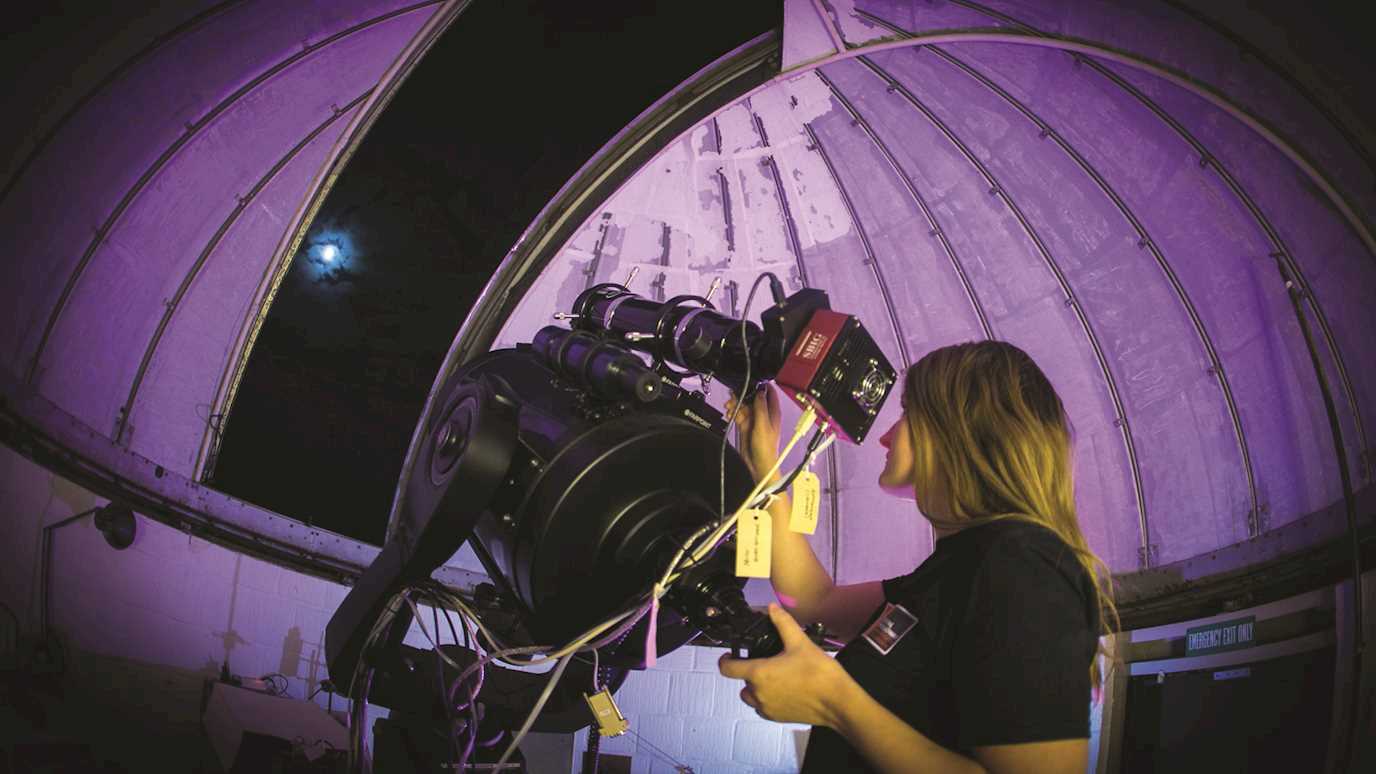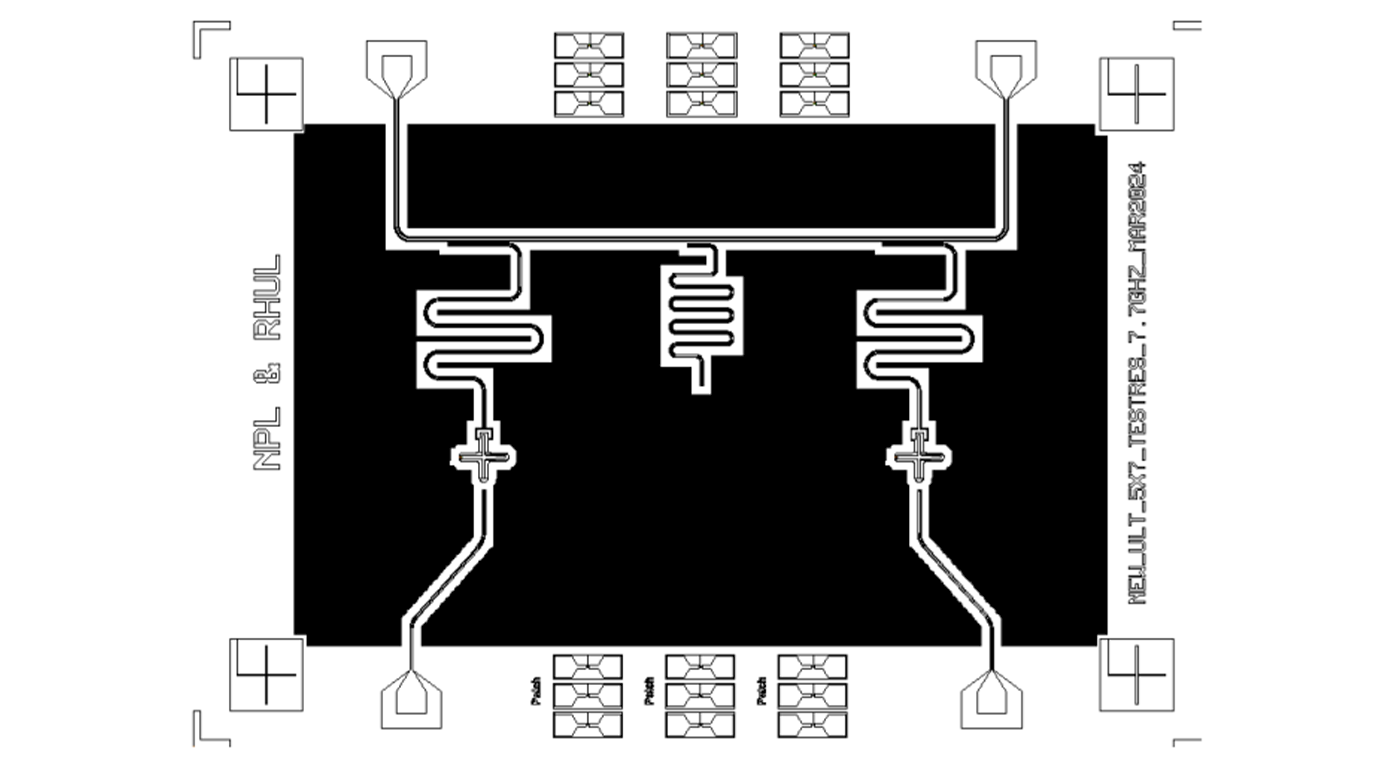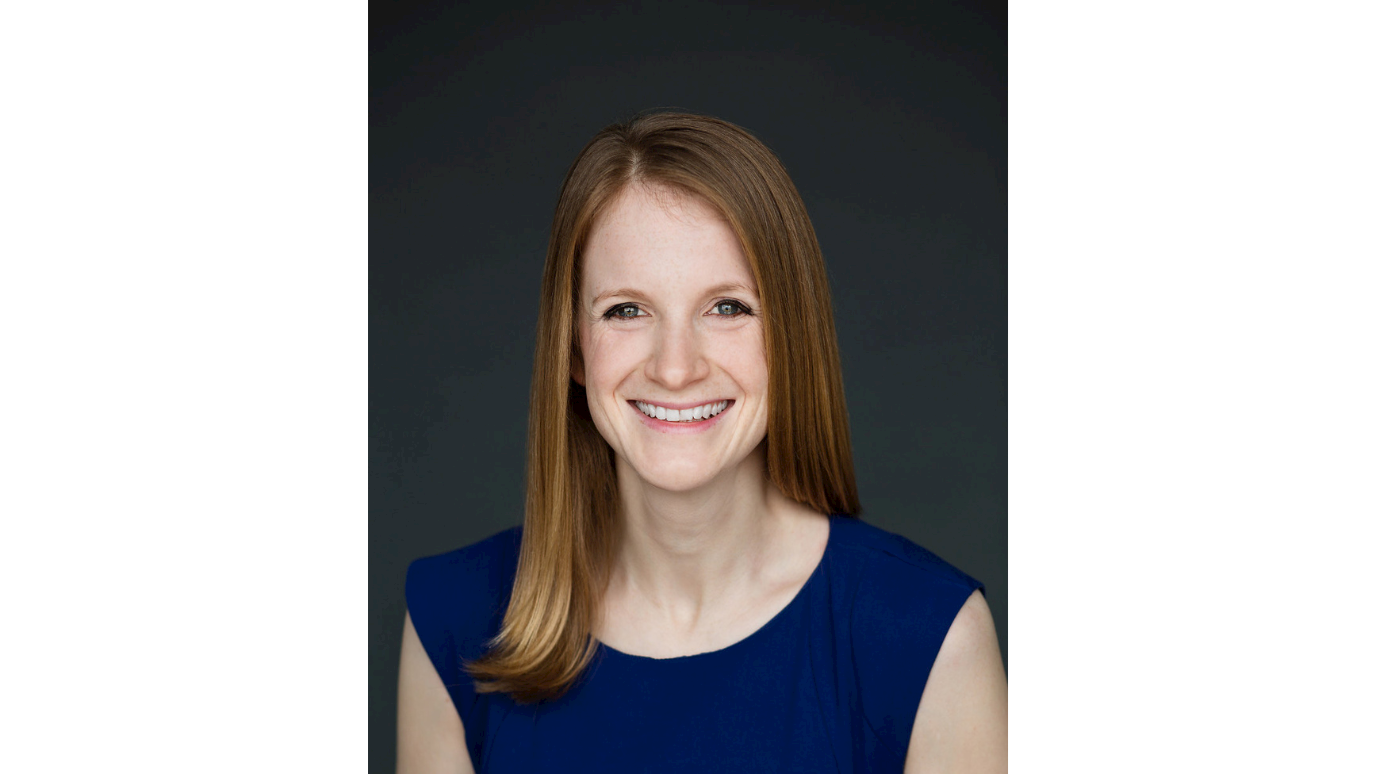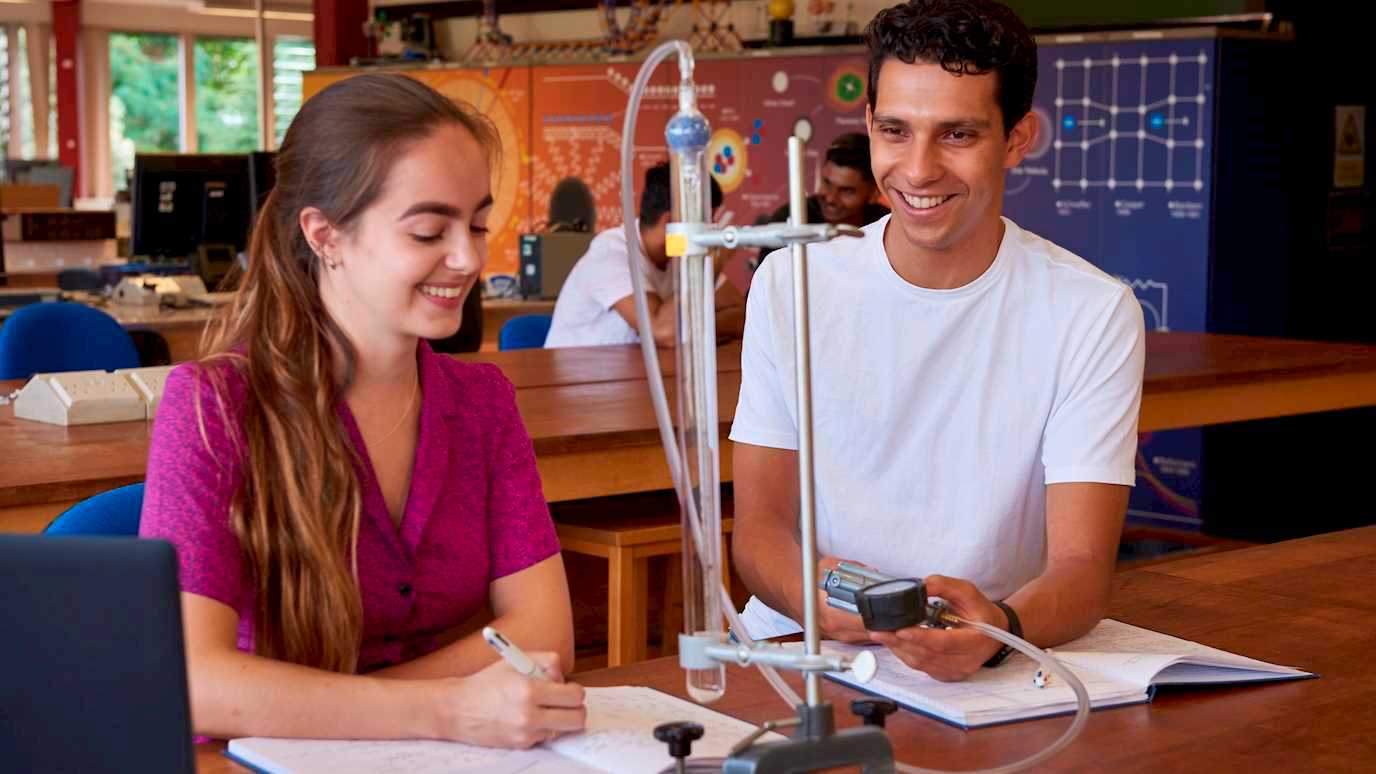This term we celebrated five successful vivas with Adam Boszon, Jacob Dunstan, Shaun Geaney, Swann Levasseur and Marjin Lucas completing their PhDs in the past few weeks. We would like to congratulate all of them and wish them all the best for the future!

Adam's PhD was completed under supervision of Professor Glen Cowan as a member of the Particle Physics group.
His thesis, titled "Measurements of Hadronic tt̅ Differential Cross Sections with ATLAS and Unfolding with Gaussian Processes", describes an analysis on data from the ATLAS experiment at the Large Hadron Collider, taken in 2015 and 2016. Collision events were filtered to select those where top quark-antiquark pairs were produced, before decaying into six or more hadronic jets. Multiple distributions were measured to test existing theoretical predictions and to provide a window into exotic physics beyond the Standard Model. Also presented is a novel technique to correct for effects due to the detector apparatus. This uses the statistical tool of Gaussian Processes and demonstrates a number of advantages over existing techniques. Adam spent two years based at CERN in Geneva, Switzerland as part of his PhD.

Photo shows (left to right): Professor Roger Barlow from the University of Huddersfield (examiner), Professor Glen Cowan, Adam Boszon and Dr Eram Rizvi from Queen Mary, University of London (examiner).
Adam is now working as a machine learning research scientist with Babylon Health in London.
Jacob's PhD was completed under supervision of Professor Phil Meeson as a member of the Quantum Devices group.
Jacob’s thesis, titled "Instabilities in arrays of coupled squids", concerned the search for understanding hysteretic behaviour in superconducting quantum circuits. This hysteretic behaviour was first observed in arrays of quantum interference devices (SQUIDs) installed in high-Q factor co-planar resonators, providing a very sensitive probe of the state of the array. Jacob performed extensive numerical modelling and some experiments to demonstrate that the hysteresis arises from sharing wires between squids and the constraints that puts on the superconducting phase. The phenomenon may have applications in sensing and detection and quantum information processing.

Photo shows (left to right): Professor David Haviland from the Royal Institute of Technology, Sweden (examiner), Jacob Dunstan and Dr. Andrew Casey from Royal Holloway (examiner).
Jacob will continue as a PostDoctoral researcher in the Quantum Devices group at RHUL.
Shaun's PhD was completed under supervision of Professor Phil Meeson as a member of the Quantum Devices group and of Professor Alexander Tzalenchuk and Dr. Sebastian de Graaf from NPL.
His thesis was titled "Bringing Near-Field Scanning Microwave Microscopy into the Quantum Regime". Near-field scanning microwave microscopy (NSMM) is a widely used scanning probe microscopy (SPM) technique. It can non-intrusively probe the material properties of a sample at the nano-scale using microwave frequency radiation. The rapid development of nanotechnology, materials and surface science underpinned by scanning probe techniques drives the demand for ever more versatile and non-invasive nano-scale analysis tools. Specifically, the development of solid-state quantum technologies has created a need for nano-scale measurement techniques that operate in the same regime as these quantum devices. However, there are very few nano-scale characterisation tools that are capable of quantum coherent interaction with samples. In particular, all NSMMs so far operate in the `classical' regime, at high powers. To reach the quantum limit for NSMM we require (i) temperatures that are lower than the photon energy, and (ii) ultra-low power such that the average photon number
, as is necessary for coherent interaction with a quantum system without saturating it. This work presents an ultra-low power cryogenic NSMM integrated with an atomic force microscope (AFM), to enable precise distance control. A high-quality 6 GHz superconducting resonator is used as the microwave probe. This resonator is micro-machined so that it also forms the scanning tip of the AFM. We show that the microscope is capable of obtaining nano-scale dielectric contrast down to the single microwave photon regime, up to
times lower power than in typical NSMMs. The microscope was designed in-house in a dilution refrigerator operating at 10 mK with a customised suspension system to minimise the effects of external mechanical vibrations. In this thesis, the performance of this NSMM is evaluated. It also includes a discussion on the remaining challenges towards developing an NSMM capable of quantum coherent interaction, an enabling tool for the development of quantum technologies in the microwave regime.

Photo (left to right): Dr Sebastian de Graaf and Shaun Geaney in front of the cryostat used for the research.
After having completed his PhD Shaun will now pursue a career in programming and is hoping to work abroad for a while.
Swann's PhD was completed under supervision of Dr. Stephen Gibson as a member of the Accelerator Physics group and Dr. James Storey from CERN.
His thesis was titled "Development of a Hybrid Pixel Detector Based Transverse Profile Monitor for the CERN Proton Synchrotron".
The ability to rapidly identify the source of emittance blow-up in the CERN Proton Synchrotron (PS) is crucial to ensure the good operation of the Large Hadron Collider (LHC) and its successor the High Luminosity LHC (HL-LHC). Such ability requires to continuously and non-destructively measure the beam size. However, the beam transverse diagnostics in the PS are currently performed by Beam Wire-Scanners (BWS) and Secondary Emission Monitor (SEM) grids. Both of these systems provide high-quality measurements of the beam transverse size. Nonetheless, the destructive nature of their measurement method limits their use to single-shot measurements during the beam commissioning. For this reason, the installation of a new Beam Gas Ionisation (BGI) profile monitor was proposed for the PS.
The new PS-BGI infers the beam profile from the transverse distribution of electrons created by the ionisation of rest gas molecules by the high energy beam particles. The distribution is measured by accelerating the electrons onto an imaging detector based on Timepix3 Hybrid Pixel Detector (HPD). This measurement method allows for continuous, non-destructive beam size measurement. Moreover, the extreme sensitivity of Timepix3 HPDs allows foregoing the use of a gas injection system, while permitting to record the beam size at several kilo-Hertz. This thesis covers the development of this new PS-BGI, from early concept and simulation to the installation and commissioning of a prototype in the PS. This prototype demonstrated the first successful use of Hybrid Pixel Detectors (HPD) in the primary vacuum of an accelerator at CERN. The performances of the prototype were characterised and the first continuous beam profile measurements of the LHC-type beam in the PS were recorded.
You can find out more about Swann’s research here.

Photo (left to right): Dr. Kay Wittenburg from DESY, Germany (examiner), Dr. Asher Kaboth from Royal Holloway (examiner), Swann Levasseur, Dr. James Storey and Dr. Stephen Gibson.
Following his successful PhD at Royal Holloway, Swann was awarded a CERN Fellowship to continue developments of BGI project and make a new instrument for the Super-Proton Synchrotron, and in future, the Large Hadron Collider at CERN.
Marjin's PhD was completed under supervision of Dr. Philipp Niklowitz as a member of the Quantum Matter group.
Marjin's thesis is titled "Order and excitation near the spin-density-wave masked quantum critical point in Nb(1-y)Fe(2+y)" and his work falls into the research area of magnetic quantum phase transitions and their role in the emergence of new electronic states of matter including unconventional superconductivity. Nb(1-y)Fe(2+y) is the host of an archetypal phase transition from ferromagnetism with its parallel spins to paramagnetism with its disordered spins. At low temperatures, this phase transition is counter-intuitively replaced by magnetic order with modulated spin orientation. Marijn’s neutron scattering studies reveal the nature of the two magnetically ordered states in Nb(1-y)Fe(2+y) and resolve magnetic excitation spectra that reflect the system’s proximity to both types of magnetic order.

Photo (left to right): Professor Keith Refson from Royal Holloway (examiner), Marijn Lucas, Dr Philipp Niklowitz and Professor Stephen Hayden from the University of Bristol (examiner).
Marjin will continue at Royal Holloway in his new role as a PostDoc of the Low Temperature Physics Group for the European Microkelvin Platform.



























